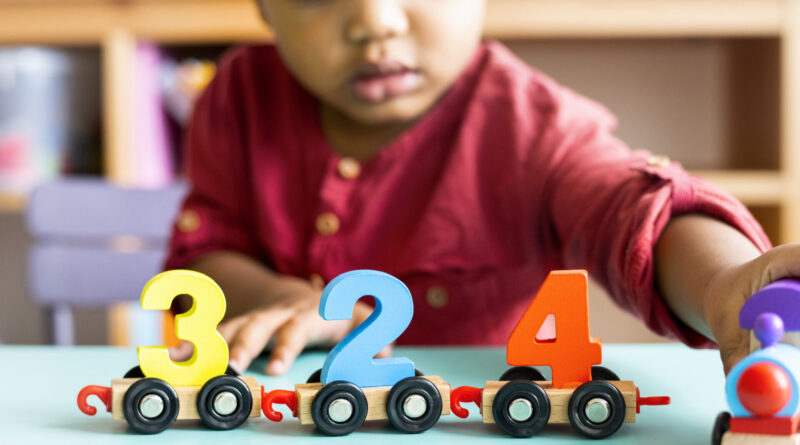What Are the Key Stages of Child Development?
Child development is a complex, lifelong process. As children grow, they go through different stages, each marked by significant physical, cognitive, emotional, and social milestones. Understanding these stages helps parents, caregivers, and educators support children in reaching their full potential. The key stages of child development are generally classified into specific periods, each with its own unique characteristics and behaviors.
1. Infancy (0-2 Years)
Infancy is a critical stage of child development, where the foundation for future growth is laid. In this stage, babies undergo rapid physical growth. Their cognitive abilities also develop quickly, with their brains forming important neural connections.
Key Developmental Milestones:
- Physical Development: Babies develop basic motor skills like rolling over, crawling, and eventually walking.
- Cognitive Development: Babies begin to recognize faces, understand cause-and-effect relationships, and develop object permanence (the understanding that objects continue to exist even when they cannot be seen).
- Emotional Development: Attachment to caregivers is formed during this stage, which plays a significant role in emotional development.
- Language Development: At this stage, babies begin to babble, imitate sounds, and say their first words by the end of the second year.
2. Toddlerhood (2-4 Years)
The toddler years are characterized by increased independence, exploration, and the rapid development of motor skills. Children in this stage show a desire to assert themselves and test boundaries.
Key Developmental Milestones:
- Physical Development: Toddlers continue to improve coordination and balance. They begin running, climbing, and mastering fine motor skills like using utensils.
- Cognitive Development: During this stage, toddlers exhibit a growing vocabulary and start to engage in simple problem-solving.
- Emotional Development: Toddlers experience emotional highs and lows and start to express feelings like frustration and joy.
- Social Development: This is a time when toddlers begin to engage in parallel play with other children, learning to interact socially.
3. Early Childhood (4-6 Years)
Early childhood is a period of dramatic growth in many areas. Children become more aware of themselves, and their social circles expand beyond the immediate family. They also become more aware of their environment.
Key Developmental Milestones:
- Physical Development: By age five, children generally have better control over their movements. They can dress themselves and ride a tricycle.
- Cognitive Development: Children at this stage develop a deeper understanding of symbols and begin to engage in imaginative play. Their memory improves, and they start to make logical connections.
- Language Development: Vocabulary expands dramatically, and children learn more complex sentence structures.
- Social Development: Early childhood is when children begin to form friendships and understand social rules like sharing and turn-taking.
4. Middle Childhood (6-12 Years)
Middle childhood is a time when children refine their skills, develop intellectual abilities, and begin to form their identities. This stage involves a balance of independence and dependence.
Key Developmental Milestones:
- Physical Development: Growth slows during this stage, but children gain strength and coordination. Their fine motor skills also improve, allowing them to excel in activities like sports and writing.
- Cognitive Development: Children develop concrete thinking skills and begin to understand more complex concepts like time, space, and quantity.
- Social Development: Peer relationships take center stage during this time, and children begin to understand the importance of friendships and teamwork.
- Emotional Development: Children develop a better understanding of their emotions and start learning to regulate them. They also develop self-esteem based on their interactions with peers and adults.
5. Adolescence (12-18 Years)
Adolescence marks the transition from childhood to adulthood. This stage is marked by significant physical, emotional, cognitive, and social changes. It is often a time of questioning, identity exploration, and independence.
Key Developmental Milestones:
- Physical Development: Adolescents undergo puberty, which brings about significant changes in height, weight, and sexual maturity.
- Cognitive Development: Teens develop abstract thinking abilities, which help them form complex ideas about the world and their place in it.
- Social Development: Peer influence becomes stronger, and teens are often influenced by their friends’ opinions. This is also the stage when romantic relationships begin to emerge.
- Emotional Development: Adolescents begin to solidify their sense of identity and may experiment with different roles or behaviors. This stage is also marked by mood swings and self-discovery.
6. Young Adulthood (18-25 Years)
While technically not considered childhood, young adulthood is a transitional stage between adolescence and full adulthood. During this stage, individuals take on greater responsibility for themselves and begin to plan their futures more seriously.
Key Developmental Milestones:
- Physical Development: Peak physical strength and endurance are typically seen in this stage.
- Cognitive Development: Abstract and critical thinking skills mature, allowing young adults to make more informed decisions about their career and personal life.
- Emotional Development: Young adults may begin to solidify long-term relationships, whether personal or professional, and form a sense of stability.
- Social Development: Increased independence from parents and the exploration of different career, social, and educational opportunities.
Conclusion
Child development is a dynamic process, with each stage of development laying the foundation for the next. Understanding the stages of child development is essential for supporting a child’s physical, emotional, cognitive, and social growth. Parents, caregivers, and educators play a vital role in providing the appropriate environment and resources to nurture a child’s development at every stage.

